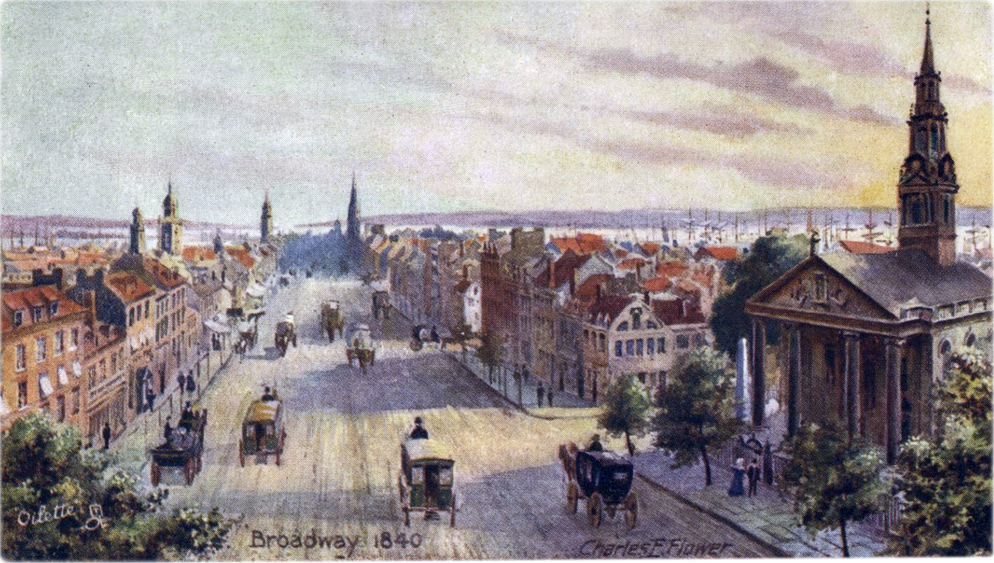
Lower Broadway in the 19th Century
In the early 19th century, Lower Broadway was the most important thoroughfare in the City of New York. Its importance increased even further with the transfer of the City Hall to the current palace at City Hall Park. For the section of Lower Broadway from Vesey Street to Chambers Street see More: Broadway at City Hall Park in 19th Century ►
In the Great Fire of 1845, a great number of buildings were destroyed.
The second temple of Trinity Church was demolished in 1839 due to structural problems. The third and current temple was consecrated in 1846.
In the late 19th century, many of the early skyscrapers were built in Lower Manhattan, including the Western Union Telegraph Building (1875), Washington Building (One Broadway, 1885), Standard Oil Building (1885), Manhattan Life Building (1894), Bowling Green Offices (1898), Saint Paul Building (1898) and others.
Asphalt pavement was laid down in Broadway in 1900.
Throughout the 19th century, Broadway's importance grew year after year, but fashionable venues moved north, especially the best theaters. At the beginning of the 20th century, the hottest place was still Broadway, but in Times Square. More: Broadway in the 19th Century ►
◄ Broadway
Broadway in 1940, looking south from St. Paul's Chapel (on the right). Painting by English artist Charles Edwin Flower (1871-1951), published about the early 20th century in a vintage postcard by Raphael Tuck & Sons, Oilette series. Compare with the engraving by Samuel Davenport (1783–1867).
Lower Broadway in the 19th Century
|
Copyright © Geographic Guide - Antique images of NYC. Historic Places. |
